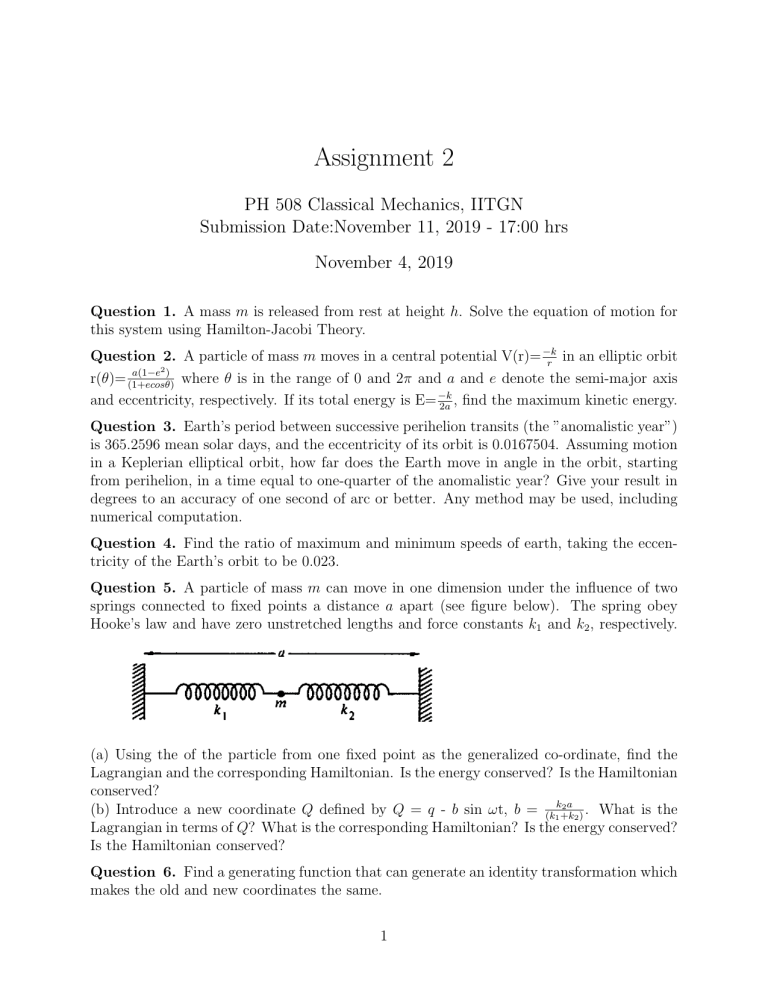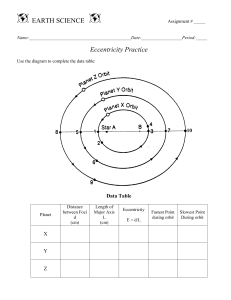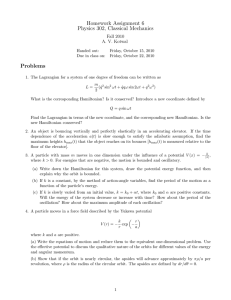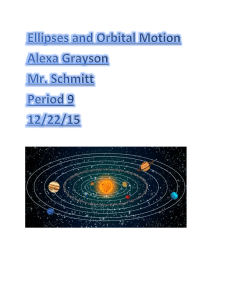
Assignment 2 PH 508 Classical Mechanics, IITGN Submission Date:November 11, 2019 - 17:00 hrs November 4, 2019 Question 1. A mass m is released from rest at height h. Solve the equation of motion for this system using Hamilton-Jacobi Theory. Question 2. A particle of mass m moves in a central potential V(r)= −k in an elliptic orbit r a(1−e2 ) r(θ)= (1+ecosθ) where θ is in the range of 0 and 2π and a and e denote the semi-major axis , find the maximum kinetic energy. and eccentricity, respectively. If its total energy is E= −k 2a Question 3. Earth’s period between successive perihelion transits (the ”anomalistic year”) is 365.2596 mean solar days, and the eccentricity of its orbit is 0.0167504. Assuming motion in a Keplerian elliptical orbit, how far does the Earth move in angle in the orbit, starting from perihelion, in a time equal to one-quarter of the anomalistic year? Give your result in degrees to an accuracy of one second of arc or better. Any method may be used, including numerical computation. Question 4. Find the ratio of maximum and minimum speeds of earth, taking the eccentricity of the Earth’s orbit to be 0.023. Question 5. A particle of mass m can move in one dimension under the influence of two springs connected to fixed points a distance a apart (see figure below). The spring obey Hooke’s law and have zero unstretched lengths and force constants k1 and k2 , respectively. (a) Using the of the particle from one fixed point as the generalized co-ordinate, find the Lagrangian and the corresponding Hamiltonian. Is the energy conserved? Is the Hamiltonian conserved? 2a (b) Introduce a new coordinate Q defined by Q = q - b sin ωt, b = (k1k+k . What is the 2) Lagrangian in terms of Q? What is the corresponding Hamiltonian? Is the energy conserved? Is the Hamiltonian conserved? Question 6. Find a generating function that can generate an identity transformation which makes the old and new coordinates the same. 1


